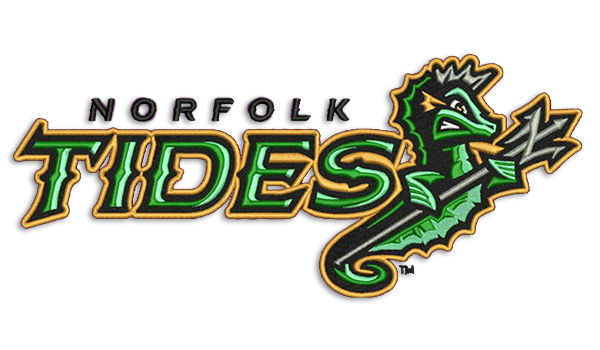Simplifying the Art of Needlework Digitizing: Step-by-Step Overview
Needlework digitizing is a precise craft that requires accuracy and creative thinking. As technology proceeds to development, the digitization procedure has actually come to be more accessible, permitting fanatics to bring their intricate designs to life easily. In this guide, we will unravel the complexities of needlework digitizing, damaging down each action methodically to streamline the process and empower both novices and seasoned embroiderers alike. Stay tuned to find how you can simplify this intricate art kind and transform your imaginative visions right into wonderfully stitched masterpieces.
Understanding Needlework Digitizing Software Program
Embroidery digitizing software program acts as a critical tool for changing intricate styles right into electronic formats compatible with needlework machines, assisting in precise stitching and personalization. This customized software enables customers to import various picture documents formats, such as JPG or PNG, and convert them right into needlework machine-readable styles like DST, EXP, or PES - Digitizing for Embroidery. By making use of features like stitch modifying, padding alternatives, and thread shade option, digitizing software enables individuals to manage every aspect of the style procedure
In addition, progressed embroidery digitizing software supplies tools for producing complicated layouts, readjusting stitch thickness, and including elaborate information. Individuals can likewise sneak peek the style prior to stitching it out, making certain precision and minimizing mistakes. Additionally, many software programs give automated attributes that assist improve the digitizing process, conserving time and effort.
Comprehending the abilities of embroidery digitizing software application is crucial for attaining high-grade outcomes in needlework jobs. By grasping this tool, needlework fanatics and experts can unleash their creativity and bring intricate layouts to life with accuracy and effectiveness.

Selecting the Right Design File
After familiarizing on your own with the abilities of embroidery digitizing software, the next crucial step in the procedure is picking the best style file for your project. Digitizing for Embroidery. When picking a layout apply for needlework digitizing, it's vital to take into consideration the intricacy of the design, the size of the end product, and the sort of textile you will certainly be collaborating with
For elaborate designs with fine information, a high-resolution picture or vector file is recommended to ensure that the embroidery machine can properly replicate the design. Additionally, the size of the end product plays a substantial role in picking the ideal design file. Larger layouts may call for higher resolution files to preserve clearness and intensity.
Additionally, the kind of fabric you will certainly be stitching on affects the visit this web-site choice of style documents. Different materials might need modifications in the layout file to make sure that the stitches are effectively aligned and the style looks like meant. By carefully choosing the ideal layout file based on these elements, you can set yourself up for an effective needlework digitizing procedure.
Digitizing Tools and Techniques
Utilizing specialized software and precision techniques, digitizing tools are important in transforming complex styles into embroidery-ready files. Embroidery digitizing software application, such as Wilcom, Hatch, or Embrilliance, supplies the necessary system to transform artwork into stitch data. These programs offer functions like stitch editing, rug choices, and text devices to make certain the design converts flawlessly onto fabric.
Among the vital strategies in digitizing is developing a clear course for the needlework device to comply with. This includes digitizing each element of the style with accuracy, figuring out stitch kinds, thickness, and instructions. By utilizing tools like digitizing tablets or software-specific plugins, embroiderers can achieve a high degree of precision in their digitized layouts.
In addition, understanding the art of underlay sewing is crucial for generating quality embroidery. Underlay sewing stabilizes the material and develops a foundation for the layout, guaranteeing that the end product is both aesthetically enticing and resilient. By understanding these digitizing tools and techniques, embroiderers can elevate their craft and bring detailed layouts to life with precision and performance.
Personalizing Stitch Types and Instructions
The choice of stitch kinds look at here now can considerably influence the overall look and appearance of the embroidered layout. By strategically integrating these stitch kinds, embroiderers can accomplish deepness and measurement in their designs.
Furthermore, the instructions of stitches plays an essential function in improving the visual charm of the final needlework. By exploring with different stitch angles and patterns, embroiderers can bring their styles to life with exceptional detail and ins and out.
Testing and Refining Your Digitized Design
To make sure the accuracy and high quality of your digitized style, complete screening and refinement are important actions in the embroidery digitizing procedure. As pop over to this site soon as you have finished the digitization of your design, it is vital to examine it prior to waging the real needlework. Evaluating allows you to recognize any kind of prospective problems such as thread breaks, stitch density problems, or layout distortions that might affect the final outcome.

After testing, it is essential to refine your digitized layout based upon the comments from the test sew-out. This might include tweaking stitch setups, readjusting thickness, or making changes to the overall layout to accomplish the desired end result. By repeating via testing and improvement, you can tweak your digitized design to excellence before moving on with the real embroidery procedure.
Verdict
To conclude, understanding the art of needlework digitizing calls for a thorough understanding of the software program, choosing the right layout file, making use of digitizing tools and strategies, personalizing stitch types and instructions, and testing and fine-tuning the digitized layout. By adhering to these steps, embroiderers can streamline the digitizing process and develop top notch embroidered styles with accuracy and effectiveness.